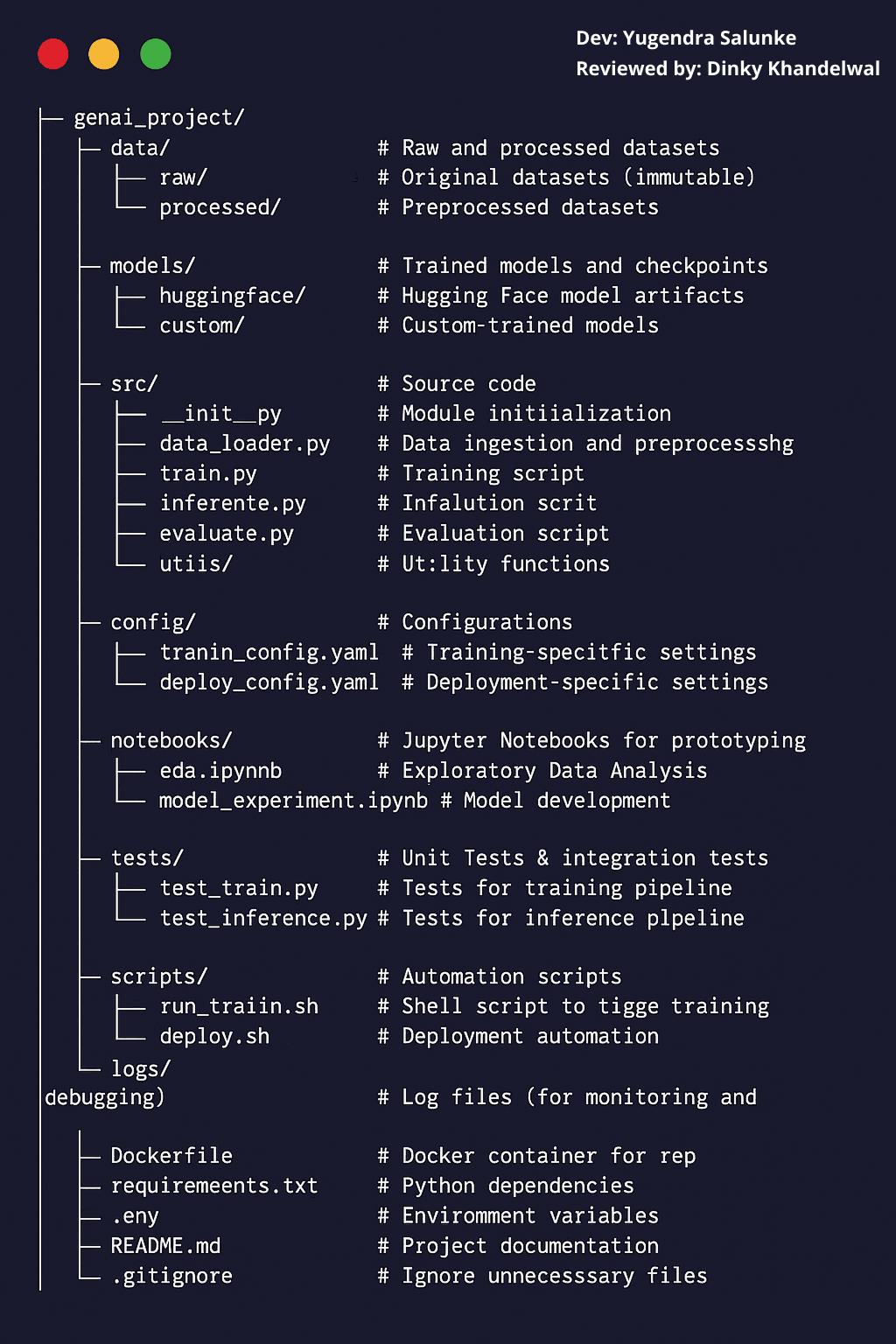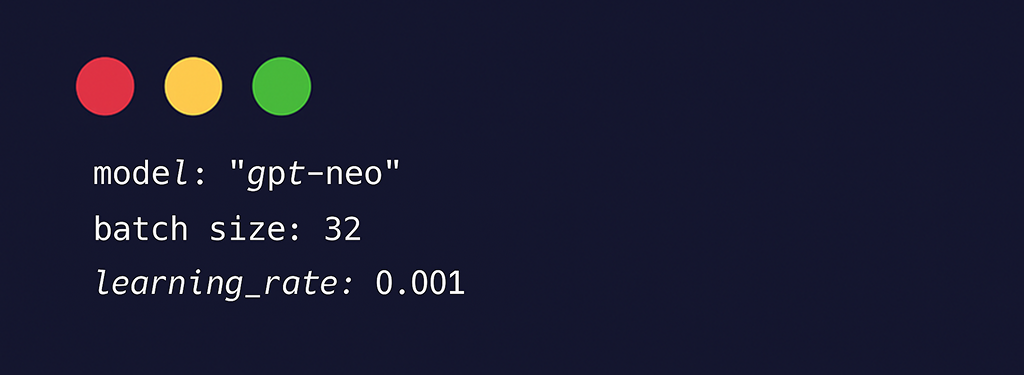So, you’ve built an impressive Generative AI (GenAI) model, and it performs exceptionally well on your local machine. But here’s the real challenge—how do you take that prototype and transform it into a production-grade system that is scalable, maintainable, and easy to collaborate on?
The Problem: From Prototype to Production
Many AI projects struggle to transition from a proof-of-concept to a fully functional, production-ready system. Common challenges include:
- Code Chaos: Unstructured repositories make it hard to debug, collaborate, and scale.
- Scalability Issues: A local prototype might not handle large-scale inference in production.
- Reproducibility: Without proper environment management, model performance may vary.
- Deployment Bottlenecks: Lack of modularization leads to inefficient workflows.
One of the most crucial yet often overlooked steps? Setting up a robust project structure.
A well-organized repository is the foundation of a successful GenAI deployment. It simplifies collaboration, accelerates debugging, and ensures seamless scaling. In this guide, we’ll break down:
- The ideal structure of a GenAI project
- Essential files and scripts you need
- Why a clear structure is vital
- Best practices for maintainability, readability, and scalability
Let’s dive in!
Why Does Project Structure Matter?
Imagine searching for a single script buried under layers of disorganized folders—frustrating, right? Without a clear structure, things become chaotic quickly. Here’s why an organized structure is a game-changer:
- Collaboration: New developers onboard faster when everything is easy to find.
- Scalability: A well-structured project scales seamlessly as it grows.
- Debugging: Clear separation of concerns makes tracing and fixing bugs easier.
- Deployment: Production pipelines require organized and modular code.
Think of it like building a skyscraper—you wouldn’t start without a clear architectural plan!
Blueprint: A Production-Ready GenAI Project Structure
Here’s a sample directory structure to kick off your GenAI project:

Why This Structure Works
Each directory has a clear purpose, ensuring your team (and future you) can:
- Navigate the project effortlessly.
- Separate concerns for better code clarity.
- Automate workflows (training, evaluation, and deployment).
Essential Files and Their Purpose
Let’s break down the key files you’ll need and why they matter:
- train.py: Main script to train your GenAI model.
- inference.py: Perform predictions using your trained model.
- evaluate.py: Assess and benchmark model performance.
- config/*.yaml: Store hyperparameters and settings to avoid hardcoding.
- Dockerfile: Ensure reproducibility via containerization.
- env: Safeguard sensitive data like API keys.
- tests/: Implement automated tests to prevent bugs from creeping in.
Best Practices for Maintainability & Scalability
1. Modular Code Design
Keep your code modular by breaking functionality into isolated, reusable scripts. For instance:
- Data handling lives in data_loader.py
- Training logic stays in train.py
- Utilities go in utils/
2. Use Configuration Files
Avoid the pain of changing hardcoded parameters. YAML configuration files provide flexibility and clarity.
Example train_config.yaml:

3. Automate Testing
Regular testing catches errors early and ensures code reliability. Use pytest for Python:

4. Version Control with Git
Adopt a structured Git workflow. Example commit message:

5. Document Thoroughly
A comprehensive README.md should include:
- Project overview
- Installation instructions
- How to run training and inference
- Contact info for support
Interactive Checkpoint: Is Your Project Production-Ready?
- Clear directory structure
- Automated training and inference scripts
- Configurations stored in YAML
- Docker for reproducibility
- Logging and error handling
- Unit and integration tests
- Documentation (README, API details)
If you missed anything, now’s the time to refine your project!
Final Thoughts
A well-structured GenAI project isn’t just about neat folders—it’s the difference between a smooth deployment and a debugging nightmare. By following these best practices, you ensure your system is scalable, maintainable, and truly production ready.
By implementing this structured approach, your GenAI project will be well-prepared for real-world applications, collaboration, and long-term success!
